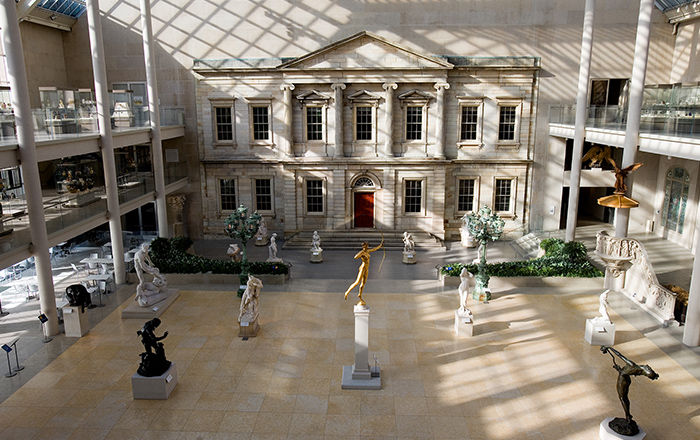Returned to lender The Met accepts temporary loans of art both for short-term exhibitions and for long-term display in its galleries.
Curtain
Indian (Gujarat), for the European market
Not on view
This Indian embroidered curtain belongs to an extraordinary group of furnishing textiles first used at Ashburnham Place, a stately home that once stood in Sussex, England. The group included two sets of bed hangings—one embroidered and the other painted-and-dyed chintz—decorated with the same pattern. The group could have had a single European (probably British) prototype, or the designs were derived from a paper pattern sent to India from England. They represent some of the earliest material evidence for the correspondence between European designs and the products of Indian cotton painting and embroidery workshops. The design includes motifs from a variety of cultures: the Chinese-inspired perforated garden rocks that anchor the landscape, the European hunting scenes and bold foliage, and the Anglo-Indian flowering tree. The fragment of wool embroidery on fustian shown nearby is one of three surviving British-made pieces with the same design as the Indian curtain.
This image cannot be enlarged, viewed at full screen, or downloaded.

